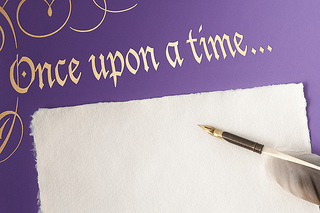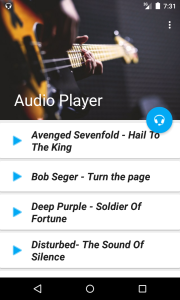
At the UX Australia Redux conference in Melbourne this week, I was struck by the dearth of writers.
Of those who identified themselves at the beginning of the UX Careers session, there were designers, business analysts, UX practitioners, project managers, developers… but barely a handful of writers in UX.
To be fair, this was the first conference an employer had ever seen value in sending me to, and I’ve spent 15 years as a digital writer. Perhaps writers were traditionally less self-organizing than those in other disciplines (there are plenty of content-related conferences now, but earlier? Not so much). Or perhaps writing isn’t valued as highly as these other disciplines.
But hey, it’s 2014. Where are the writers working in UX?
What is “writing”?
If you’re asking, “Why would you need a writer in UX?” you’re not alone. To say there are plenty of agencies and startups that produce products without any help from a writer is an understatement; in my experience, the majority of small product businesses don’t call on a writer for help with their UX. At all.
We tend to see web writing as the creation of slabs of text to go on a page, or the repurposing of slabs of text to better suit a new design (for example, to fit a responsive interface). Writers write emails and calls to action and ebooks and posts and articles. But they don’t write products.
We talk about “designing for content”, about “content containers”, about recombinant, omnichannel content, about device-independent content.
But where’s the discussion about using a writer to improve your product UX?
Let’s start it now. Here are five things a great writer knows better than anyone else in the room.
Writers understand story

Any writer, from the person writing instructions for your new blender, to the person writing the next Booker Prize winner, is a storyteller. That’s what they do: construct logical narratives. You see the product of that construction as a blog post or a book, but a writer has to construct a conceptual narrative before they can write it.
So if you think writers deal in words, you’re mistaken. Writers deal with logic, with explaining and linking concepts, and with creating natural flow. Sound familiar?
Good writers understand things like tension (or pain points) and resolution (for example, through features), and are adept with creating stories within stories. They’re also pretty great at spotting plot holes and continuity issues — get a writer to look at your page flows or wireframes and see if they don’t add some value.
Writers understand meaning
Words are the currency of writing work, and as a consequence writers tend to have lots of them. When you’re stuck for the perfect label name, a writer will be able to come up with several options, and explain the nuance of each. Because they’re so good with narrative, they’ll be able to work with multiple meanings simultaneously, looking at all the labels in an interface, and how they work together (as well as individually) to communicate meaning.
A good writer will, not surprisingly, be able to work with things like imagery, and its weight and position, fonts, and transitions. They’ll be able to integrate snippets of interface text in a way that contributes significantly more than just the particular meaning of the words they’ve used.
Writers understand empathy

Two talks at the conference focused on empathy. The first, by Simon Lawry and Zaana Howard of Huddle, was about mindsets, and how designer and client mindsets can affect the UX outcomes of a project.
The second, by Ben Rowe and Ben Tollady of Thirst Studios, focused on creating user delight and several times mentioned the importance of interface text in achieving that aim.
Consider the Gmail app’s cheery “all done” message, which displays when you reach inbox zero. It’s a small thing, but as we know the little things make a big difference. It’s also a smooth way to handle what would otherwise be a blank screen.
Writers deal with emotion all the time. Even the writer of the blender manual is working to avoid frustrating or patronizing you, and to make things seem achievable so that you feel an affinity for the product you’ve bought.
Every professionally written item aims to communicate, and to do that, the writer needs to deal with emotion. They’re skilled at empathising with the target audience — the users of their words — whether that’s on a single-word basis, or a thousand-word basis.
So if you want your interfaces to “resonate”, and your interactions to be “intuitive”, a writer’s got what it takes to help you with that. Get a writer in the room the next time you’re doing an empathy map and see what happens.
Writers understand characterisation
I mentioned above that writers work with story, and every story has characters. In the case of your product, some of those characters will be user personas you’re designing for. Another will be the brand, and its values, which you’re reflecting in a tangible product.
A writer will be adept at understanding these characters, and fleshing them out (as an aside, many writers have a natural interest in people, so they’ll love doing things like user research). Then they’ll take those characters, home in on them and draw out their specific nuances.
And because they know about empathy, they’ll help you to develop the nuances that will make the brand character “resonate” most deeply with the characters in your personas.
Writers understand communication

There’s a tendency to think that writers know about writing. I’m here to tell you that that’s a misperception.
Good writers are communicators. They’re not just about stringing words together into sentences. They’re about finding the best ways to express things — even things as mundane as “The page you’re looking for isn’t here”.
Writers work with words — they are about writing — but a good writer knows when enough is perfectly enough. When to cut, when to stop, and when to let the visuals do the heavy lifting.
So why isn’t there a writer in your UX team?
I’ve worked in UX teams a few times now, and in each role, the skills I brought to the team would not have been there had they not employed a writer. Designers would have muddled through the language with typos and tense issues, getting the language right-ish but without ever really hitting the tone, or saying what needed to be said in the space of however many characters the design itself allowed.
They would have reiterated what was expressed clearly enough through the visuals, and missed the opportunity to add value, rather than repetition, through text.
The more targeted and specific the product, the more true this is. Your UX team needs writers — at least, I think it does. Do you have any? Tell us (and if you don’t, tell us if you think a writer could help) in the comments.
Georgina has more than fifteen years' experience writing and editing for web, print and voice. With a background in marketing and a passion for words, the time Georgina spent with companies like Sausage Software and sitepoint.com cemented her lasting interest in the media, persuasion, and communications culture.

